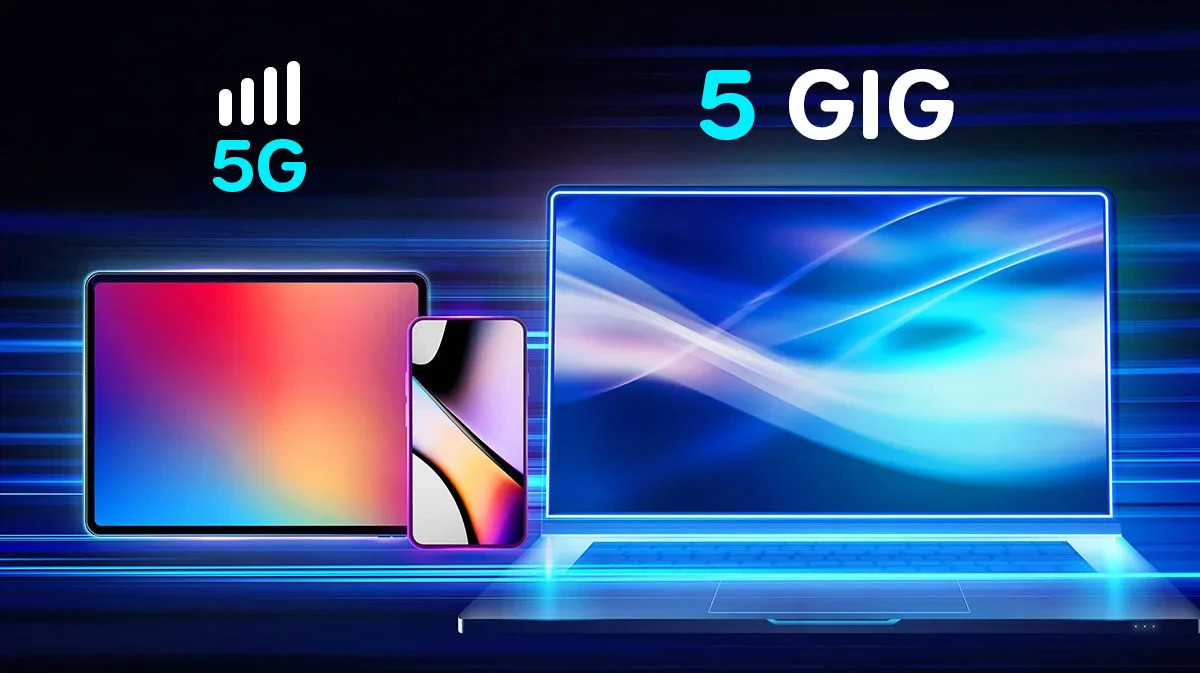What Is Internet Latency?
By: Vincent Totino
Read Time: 8 min.
March 20, 2025
Want to get more out of your home Internet?
Simply having high-speed Internet doesn't always guarantee a smooth experience. If you're dealing with lag in online gaming, video streaming delays, or slow-loading web pages, the issue might not be your Internet speed-it could be latency.
Latency, often referred to as ping, measures the time it takes for data to travel from your device to a server and back. Unlike download speed or upload speed, which determine how fast you receive and send data, latency affects how responsive your connection feels. High latency can make even a fast Internet connection seem slow, especially in bandwidth-intensive activities like online gaming, video conferencing, and streaming HD content.
In this guide, we’ll explain what latency is, how it affects your Internet speed performance, and what you can do to reduce it for a seamless Internet experience.
So what does a teenage gamer winning millions of dollars have to do with latency?

Does Latency Affect My Internet Performance?
Latency can impact many aspects of your Internet performance, even with high download and upload speeds. Some of the most noticeable issues are:
- Slower webpage loading times
- Buffering during video streaming (Netflix, YouTube, etc.)
- Delays in online gaming, making actions feel unresponsive
- Lag or interruptions in video conferencing and VoIP calls
- Longer wait times when sending or receiving large files
What Is a Good and Bad Latency?
Lower latency means a faster, more responsive connection, while higher latency can cause delays, buffering, and lag in online activities.
Latency (Ping Time) | Performance | Best For |
|---|---|---|
| Less than 20ms | Excellent – Virtually no delay | Competitive gaming, HD video conferencing, live streaming, online trading. |
| 20ms - 40ms | Good – Smooth, minimal lag | Casual gaming, 4K video streaming, video calls. |
| 40ms - 100ms | Acceptable – Some delay may be noticeable. | General web browsing, standard-definition streaming, social media |
| 100ms - 200ms | Poor – Noticeable lag, especially in gaming and video calls. | Basic email, messaging, web browsing. |
| Over 200ms | Very Poor – Major delays, making real-time interactions difficult | Not suitable for most online activities |
If you notice high latency, running an internet speed test can help you check if your internet provider is delivering optimal broadband speed and whether network congestion, multiple devices, or a poor WiFi connection is causing the issue.
What does latency indicate?
What is good latency?
What is good latency for gaming?
How does your internet connection affect latency?
How to Troubleshoot Internet Latency Issues?
If you're experiencing high latency, several factors may be affecting your Internet performance. Here's how to troubleshoot and improve your Internet speed for a smoother, lag-free experience.
1. Check Your Internet Speed
Run an Internet speed test to determine if you're getting the download speeds, upload speeds, and latency promised by your Internet provider. If your ping is too high, you may need to adjust your setup or upgrade your Internet plan.
2. Use a Wired Connection Instead of WiFi
A wired connection via an Ethernet cable provides faster upload speeds, higher download speeds, and lower latency than a WiFi connection. This is ideal for gaming, video conferencing, and streaming high-definition graphics.
3. Reduce Network Congestion
When multiple users and smart devices are connected to the same connection, network congestion can slow down performance. To minimize congestion:
- Limit bandwidth-intensive activities (e.g., streaming HD videos, online gaming, large file uploads) when others are online.
- Use a mesh router to improve WiFi coverage throughout your home.
- Disconnect unused devices from your network.
4. Restart Your Modem & Router
Sometimes, a simple reboot can clear up network congestion and refresh your Internet connection. To do this:
- Unplug your modem and router from the power source for 10–15 seconds.
- Plug them back in and allow them to reconnect.
- DRun a speed test again to check for improvements.
5. Upgrade Your Internet Plan
If you regularly experience slow Internet connections, even after troubleshooting, you may need more download bandwidth or upload bandwidth to support several devices and higher-definition activities. Consider switching to a fiber Internet provider for fast upload speeds and a more reliable Internet connection.
6. Optimize Your Router Placement
Your WiFi router should be centrally located, free of obstructions, and away from interference (e.g., microwaves, walls, or other electronics). If necessary, a WiFi extender can help eliminate dead zones and ensure seamless Internet performance throughout your home.
7. Consider Network Type
Fiber Internet provides the lowest latency due to its ability to transmit data faster via light signals rather than electrical signals used in traditional cable Internet or DSL.
Satellite Internet tends to have higher latency due to the distance data must travel to and from satellites in orbit.
Depending on the provider and infrastructure, 5G home Internet may offer lower latency than traditional broadband connections.
Don't let high latency, slow Internet speeds, or network congestion hold you back. With Optimum's high-speed Internet, you can enjoy fast upload speeds, seamless streaming, online gaming, and crystal-clear video conferencing without interruptions.
Ready to switch to Optimum?





